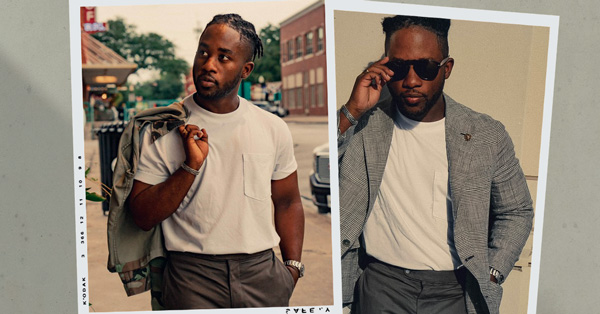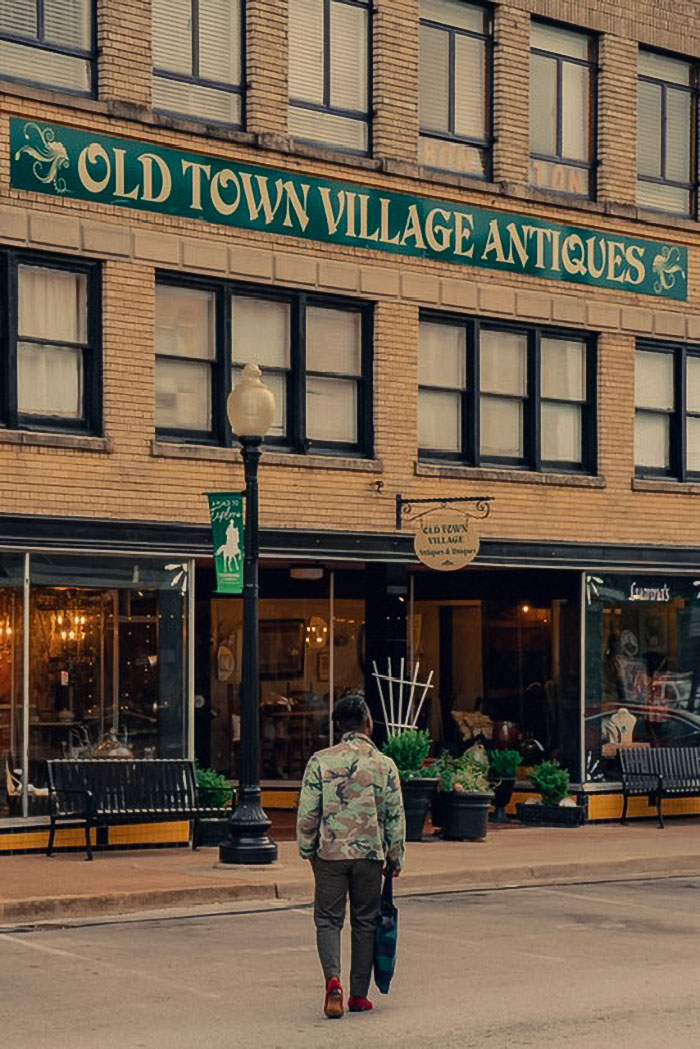
In praise of the not-so-boring staple.
ZZ Top’s (very catchy) tune aside, you don’t need a silk suit or a top hat to be a sharp-dressed man. In fact, some of the most dapper gents you can think of create their best outfits with staple–even basic–pieces. Good dressers don’t avoid wearing simple, essential items of clothing–they just make better use of them and know how, when, and where to feature them in their outfits.
If you’re used to relying on a statement piece like a colorful shirt or interesting sneakers to help you feel pulled together, it can be tricky to shift your mindset. And finding simpler garments that can still do the heavy lifting in the wardrobe department doesn’t always feel easy. That’s why we asked Primer style contributor Daniel Z. Baraka to weigh in–many of his favorite looks depend on classic basics that still feel intentional rather than ordinary.
“Over the many years I’ve developed my wardrobe, the one thing I’ve learned is that just as much as a strong building depends on a solid foundation, a good wardrobe depends on solid basics,” Daniel shares. “And as my style has evolved over the years, one thing has remained constant is that I’m more frequently reaching out for my basic pieces.”
One of Daniel’s essential style basics is the plain white t-shirt, which he favors for its versatility. “The importance of having strong basics is that you cannot have an outfit where every single piece is a statement piece. That would be a very strange outfit and it would be hard to pull off,” he explains.
Daniel likes pairing his plain white tee of choice with a classic pair of chinos. The white and gray combination is less expected than white and black or white and denim, but still feels crisp and modern. While the chinos are a half-step dressier than jeans, the camo-print field jacket helps the overall outfit skew more casual and modern. Instead of sneakers or boots, Daniel chose a pair of burgundy velvet slippers to finish off his look–an unexpected option, and one that makes this true to his personal taste.
To create a slightly more elevated look, Daniel swaps out the camo jacket for an unstructured blazer. It’s a little more refined, and the keyhole Persol sunglasses add a rakish touch.
But the crewneck tee keeps it from being too corporate. “If you take away the jacket, you have a very simple outfit. It’s just a plain white t-shirt and some solid chinos. Both of them can stand on their own because I chose good quality pieces for those,” he says. Daniel personalizes this look with some of his favorite accessories–a bold sterling silver cuff bracelet and a lion-head pin instead of a boutonniere.
For his most casual outfit, Daniel paired the tee with blue patterned shorts and simple leather driving mocs. “If you’re going experimental on the pants, you might want to go with a plain top…that’s pretty much how you strike that balance,” he explains.
Unlike Daniel’s camp collar shirt, the plain white crew neck doesn’t have a pattern or open collar to add interest. But it still has some stylistic features that caught Daniel’s eye.
“When I picked it up, I felt that slightly heavier cotton,” Daniel explains. “It’s very supple, and I love that. Since it was an oversize fit, I decided to go for a smaller size. I love how the shoulder line laid on my shoulder, how it felt, the way the heavier cotton draped. I tend to actually go and splurge on basics because I know that my entire wardrobe basically is going to be built upon them.”
As you’re building your wardrobe, think about the foundation analogy Daniel mentioned. You’re not going to buy and then get rid of all your clothes, only to start again season after season–most of your pieces, unless they’re very trendy, are going to be with you for years. And they’re going to need to stand the test of time.
Daniel pays more for basics because he knows his wardrobe is going to be built around them. So he chooses a higher quality tee or pair of chinos; they both look nicer than cheaper versions and last longer. He tends to be more budget-minded when it comes to the pieces that stand out; for the camo jacket, he found an affordable style first rather than investing in an expensive option right away.
Your foundation pieces, your basics–things like dark denim and chinos, solid t-shirts, and Oxford shirts–are style chameleons that can be dressed up or down. And not only are good, solid basics an investment in and of themselves, they serve as a background for more unusual pieces–items that might not always fit your body, your needs, or your ideas of who you are over time. “As your idea of what works for you changes, it will probably be those pieces that are a bit more eccentric or unique to you that no longer work, not your basics,” Daniel explains.
“The way you like to express yourself might change. You will change. Your tastes will change. It’s easier to add these pieces that are more particular to your current style if you have a good stable of staples.”

That’s the difference between style and fashion: If you’re stylish, you have your own aesthetic and you always look well dressed, even if you’re not following fashion trends all that closely. But if you have mostly graphic tees or patterned shirts, don’t worry, and don’t think you need to rush out and buy bags and bags of new clothing.
“If I had to give my younger self some advice on building a wardrobe, my very first comment would be to take your time. Even if you have all the money in the world, you cannot build a solid wardrobe that you’re really proud of and enjoy without investing time,” Daniel tells us. “Enjoy the process.”
Explore more:
See more of Daniel’s Primer Contributions